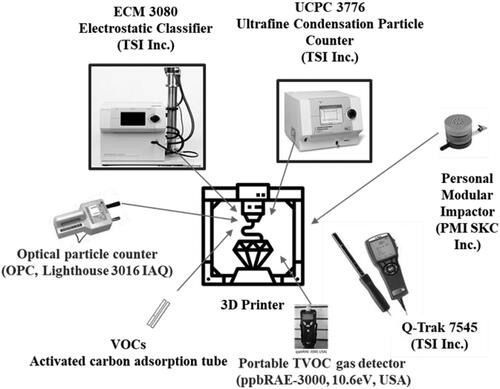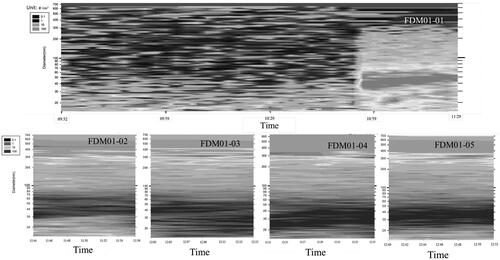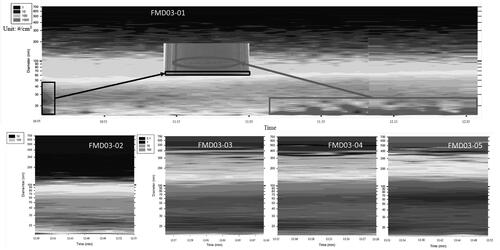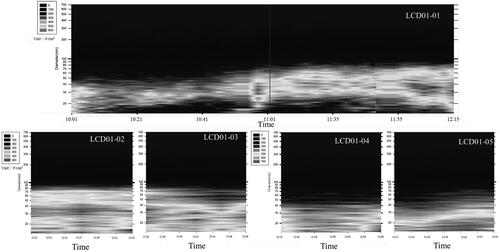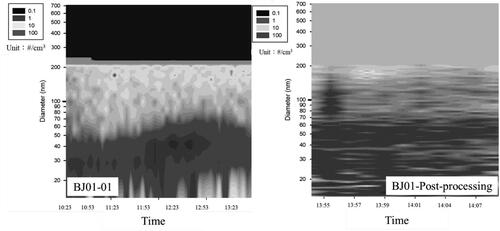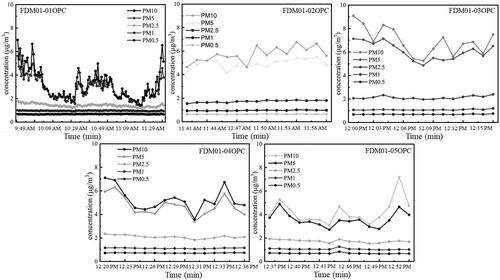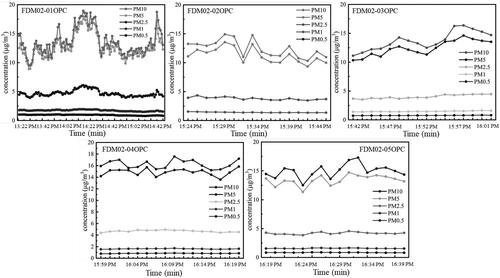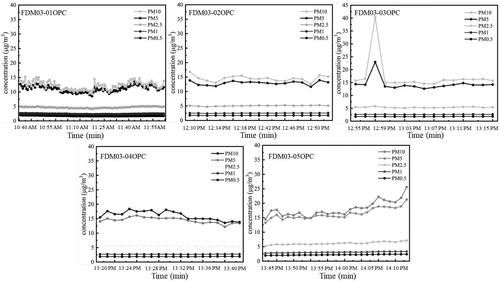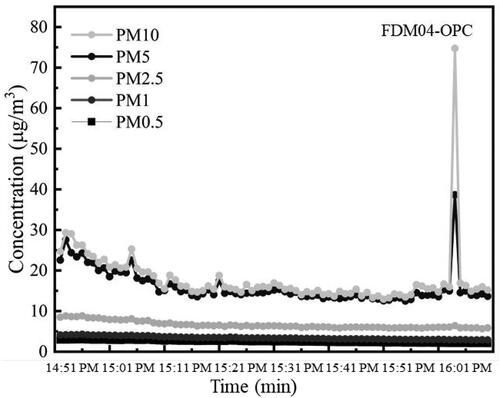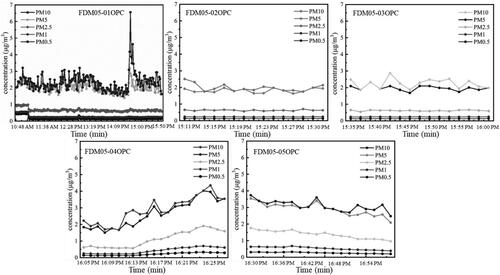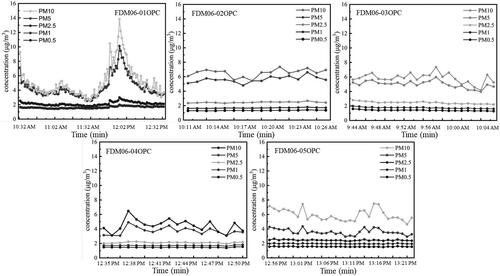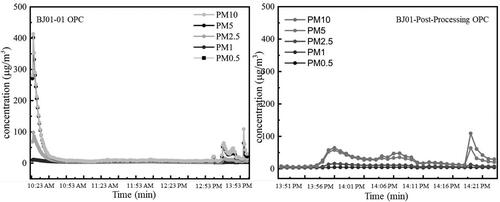Figures & data
Figure 1. Floor plan of the FDM02 3D printing workplace.
The gray circles and the triangles represent the different types of 3D printers. The light-gray shapes represent operating printers, and the dark-gray shapes represent nonoperating printers. The numbers 1 to 5 indicate the sampling points. The sampling time for sampling point 1 was 2 hr, and those for sampling points 2, 3, 4, and 5 were 12 min. The timelines for the sampling points are shown in .
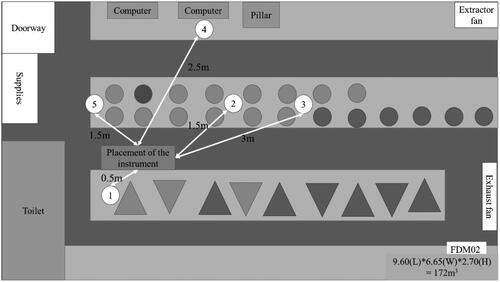
Table 1. Specifications of the studied 3-D printers and print conditions.
Table 2. Estimation of particulate matter and TVOCs during 3D printing in occupational workplaces.
Table 3. Detection of VOCs during 3D printing in occupational settings.
Supplemental Material
Download MS Word (10.6 MB)Data availability
Data will be provided by the authors upon request.

